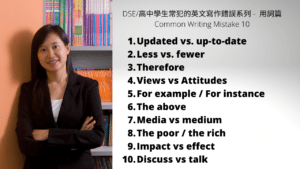Edexcel English IGCSE: From Taking on the World by Ellen MacArthur
Q4. In the passage from ‘Taking on the World’, what do we learn about Ellen MacArthur?
In your answer, you could think about:
- the dangers and difficulties of the task;
- MacArthur’s approach to the task;
- the use of language.
You should refer closely to the passage to support your answer. You may use brief quotations.
Edexcel English IGCSE Model Essay by an Expert
In this passage, we learn about MacArthur’s sailing expertise and her admirable resilience in the face of a terrifying challenge. She is well-prepared, independent and determined.
The reader learns that MacArthur is an expert in sailing. The introduction to the passage reveals that she was the youngest and shortest in a race to sail a yacht around the world, which sets up the reader’s expectation for an admirable character. The use of technical language which isn’t necessarily familiar to the reader, such as “mouse lines”, “halyard” and “jumar”, show that MacArthur clearly knows what she is doing. She is also portrayed as cautious, as she is aware of the risks of the task ahead. She “agonised for hours” about how to fold the halyard; “agonised” is a strong, emotive word, reflecting the importance of getting it right, and showing that she is not willing to take unnecessary risks. She decides that “the time was right” in the morning: the use of monosyllables creates a blunt and determined tone, showing her confidence in her decision about when to begin her climb.
By describing the challenges involved in climbing the mast, MacArthur displays her bravery in taking on such a difficult task. Before the climb, she outlines the many risks involved in replacing the halyard, including that of terrible injury. She states that she could be “thrown against the mast”, which creates a violent image, highlighting her vulnerability. Furthermore, she could “break bones” as a result, and the plosive alliteration emphasises the terrible pain that this would inflict. Another risk is that something could go wrong with the boat while she is “90 feet above” it. The use of statistics here provides a sense of scale for the reader; the fact that MacArthur is willing to climb so high on a moving boat is evidential of her bravery.
Once MacArthur has begun the difficult climb, the reader learns of her determination and ability to self-motivate. The use of comparatives shows that the climb becomes increasingly challenging, the higher she climbs: “harder and harder”, “heavier”, and “more violent”, for example. MacArthur also repeatedly refers to her exhaustion, showing that she is becoming physically weaker throughout the climb. Her mental strength, however, remains resolute. When the halyard becomes caught, her language shows that failure is not an option: the rope “had to” come free. She also motivates herself to continue towards the end of the climb – “not far now, kiddo, come on” – showing that she is able to provide for herself the support that is lacking from others.
MacArthur is clearly a remarkable woman. In this passage, she describes just one challenge involved in the admirable task of sailing solo around the world.




